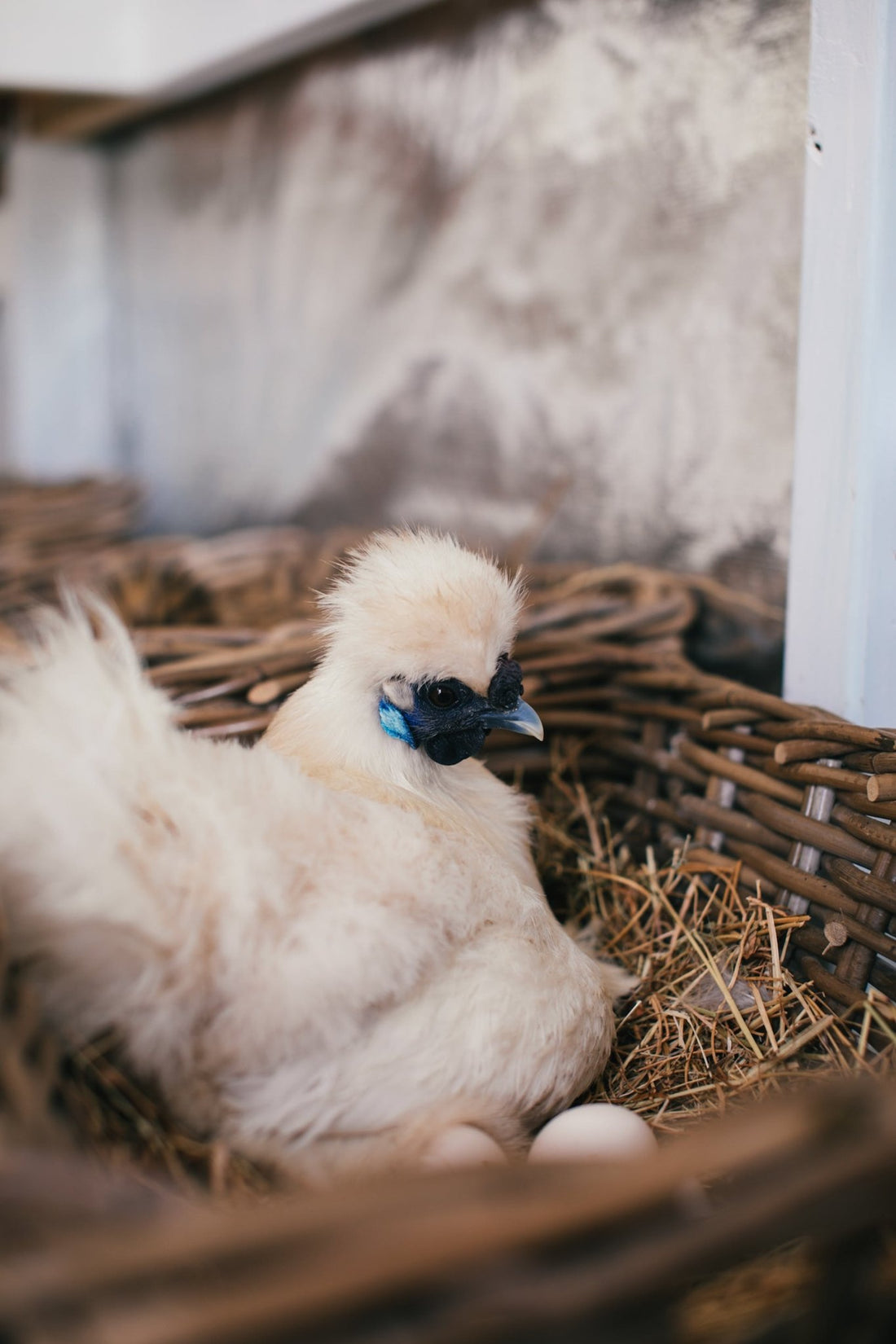Ah, broodiness – the chicken equivalent of suddenly wanting to knit tiny sweaters or bake cookies for no reason. If you've noticed one of your hens getting all maternal, spending more time in the nesting box, and giving you the stink eye whenever you come near, congratulations! You've got a broody hen. But what does this mean, and what should you do? Let’s hatch some answers!
What is Broodiness?
Broodiness is one of those chicken behaviors that can be both endearing and exasperating, often at the same time. It's when your hen suddenly decides that her life's mission is to become a mother, and she’s going to sit on those eggs come hell or high water. Let's get into the nitty-gritty of what broodiness really entails.
A Hormonal Hen Holiday
At its core, broodiness is driven by hormones. When a hen's body decides it's time to hatch some eggs, her hormones kick into overdrive. These hormonal changes trigger the behaviors and physical changes associated with broodiness.
The Physical and Behavioral Transformation
Nesting Instinct: A broody hen will start to spend more time in the nesting boxes, often rearranging bedding and feathers to make the perfect nest. It's like her version of decorating a nursery.
Feather Puffing and Growling: She’ll puff up her feathers to cover the eggs (or imaginary eggs) completely. If you try to reach under her, you might be met with a surprising chicken growl – it's her way of saying, “Back off, these are my babies!”
Reduction in Egg Laying: Once broodiness fully kicks in, your hen will stop laying new eggs. Her focus shifts entirely to the eggs under her.
Changes in Eating and Drinking Habits: Broody hens often eat and drink less than usual. They are so fixated on their eggs that they sometimes neglect their own needs.
Less Interaction: Normally active and social hens might become more withdrawn and solely focused on sitting on their nest.
The Hen's Biological Clock
Triggered by Daylight and Eggs: Broodiness can be triggered by increasing daylight hours or the presence of eggs in the nest. It’s like her internal clock says, “It’s baby time!”
Breed Specific: Some breeds are more prone to broodiness than others. For example, Silkies and Cochins are often 'serial sitters,' while others like Leghorns rarely go broody.
Why Do Hens Go Broody?
In the wild, broodiness is essential for the continuation of the species. It's nature's way of ensuring that there are always new chicks to carry on the chicken legacy. In the domestic setting, it can be a blessing if you’re looking to expand your flock naturally, but a bit of a challenge if you’re not.
The Hen's Ultimate Goal
A broody hen's ultimate goal is to hatch a clutch of eggs and raise her chicks. She will sit on those eggs for about 21 days, the typical chicken gestation period, rarely leaving the nest. She turns the eggs regularly and maintains the perfect temperature and humidity for hatching.
Signs of a Broody Hen
Nesting Box Nester: She’s always in the nesting box, only leaving briefly for food and water.
Feather Puffing: She puffs up her feathers to look larger – a classic ‘don’t mess with mama’ stance.
The Broody Growl: Yes, hens growl. If she’s making grumbling noises when you get close, she’s gone broody.
Egg Collecting: She might gather and sit on other hens’ eggs, trying to increase her clutch size.
Why Do Hens Go Broody?
It’s all in their genes! Some breeds, like Silkies or Cochins, are more prone to broodiness. It's their inner mother hen calling, a natural instinct to reproduce and raise a brood of chicks.
What to Do When Your Hen Goes Broody
Option 1: Embrace the Broodiness
If you’re in the mood for some fluffy chicks and you have fertile eggs (or can get some), why not let nature take its course?
Provide a Safe Space: Set up a comfortable and safe brooding area away from the rest of the flock.
Fertile Eggs: Make sure she has access to fertile eggs. Remember, store-bought eggs won’t hatch.
Food and Water: Ensure she has easy access to food and water, as broody hens often neglect their own needs.
Regular Checks: Keep an eye on her and the eggs, especially as the hatching day approaches.
Option 2: Breaking the Broody Cycle
Not in the market for baby chicks? You’ll need to break her broody cycle.
Remove Her from the Nest: Gently but firmly remove her from the nest and keep her away from it. Persistence is key.
Cooling Off: Some keepers use the ‘cooling off’ method, placing her in a well-ventilated cage with a wire bottom to reduce her body heat.
Keep Her Busy: Encourage her to rejoin the flock, forage, and engage in normal chicken activities.
Avoid Egg Collection: Don’t let her near eggs, as this can reinforce her broody behavior.
The Risks of Broodiness
Broodiness isn’t just about cute chicks; it comes with risks:
Neglect of Personal Care: Broody hens might stop eating or drinking enough, leading to weight loss and dehydration.
Parasite Vulnerability: Sitting in one place for long can make her more susceptible to parasites like mites and lice.
Egg Binding: In rare cases, a broody hen may suffer from egg binding, where she’s unable to lay eggs, which can be a health risk.
Broody hens are a natural and sometimes amusing part of chicken keeping. Whether you decide to let her hatch some chicks or gently coax her back to normal hen life, understanding and managing broodiness is an important skill for any chicken keeper. So, the next time your hen starts acting all motherly, remember, you’ve got options. Here’s to happy, healthy, and sometimes broody, chickens! 🐔🥚💕

